On November 1st, 2018 I left my garage and rolled out on the old Butterfield Overland Mail Route for Tucson, AZ which was a full 1200 miles away. For almost a year prior the headlines had been dominated by news of things happening along America’s southern border. Child Separations. Immigration Caravans. National Guard deployments. On social media channels the rhetoric from all sides, which had already been getting increasingly strident, ramped up to a fever pitch. Every day pleasant people were vehemently arguing. Normal conversations spiraled completely out of control.
And so I decided to unplug and take some time to talk to people who had something to do with the issues that were tearing us apart. Was it possible to meet with strangers and talk to them about the economy, homelessness, immigration, racism, the environment, and history? Was the real world becoming more like the virtual one, or was it the other way around? Riding a bicycle and using a 50’s era Speed Graphic with a hand made camera lens seemed to be the best way to find out.
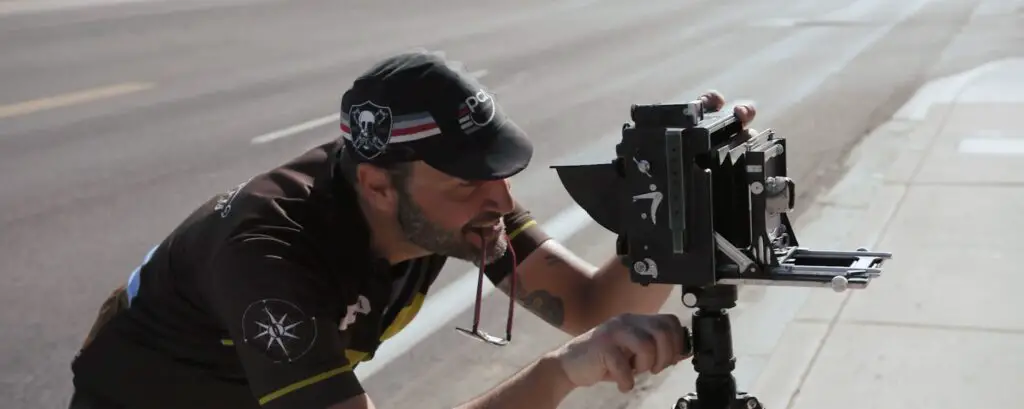
My ride took me through Delano in the Central Valley, site of the 1965-70 United Farm Workers grape strike; he visited “Indian Alley” in Los Angeles, a place of tragedy for relocated Native Americans that now displays vibrant indigenous murals; between Calexico and Yuma I stopped along America’s now infamous border wall separating the United States and Mexico. In Phoenix I visited artist/activist Lucinda Hinojos’ mural tribute to “Dreamers.” At the Gila River Indian Community, I photographed teens at a skatepark and the Gila River Relocation Camp memorial, commemorating the Japanese Americans interned there during World War II.
All the while there was a film crew from Adobe Create along for the trip. The footage was intended to become a 5 minute artist feature. It turned into a full length documentary entitled, “Ride Slow, Take Photos” instead. This is the trailer:
My camera on the trip was a 50’s era 3×4 Speed Graphic that I used Kodak B/RA X-Ray film in. X-ray film, being orthochromatic, gave the a vintage 1800’s feel that that was in keeping with the historic Butterfield Overland Mail Route. It also has the added bonus of being very inexpensive per sheet and safe to handle under a red light. This made it much easier to unload and load the 13 film holders I took along. The lens was a hand made 140mm f/4.5 consisting of two Achromat elements and four $1 American bills using simple black file folder paper waterstop apertures. I’d been building my own lenses for over a year at that point and continue to do so to this day.
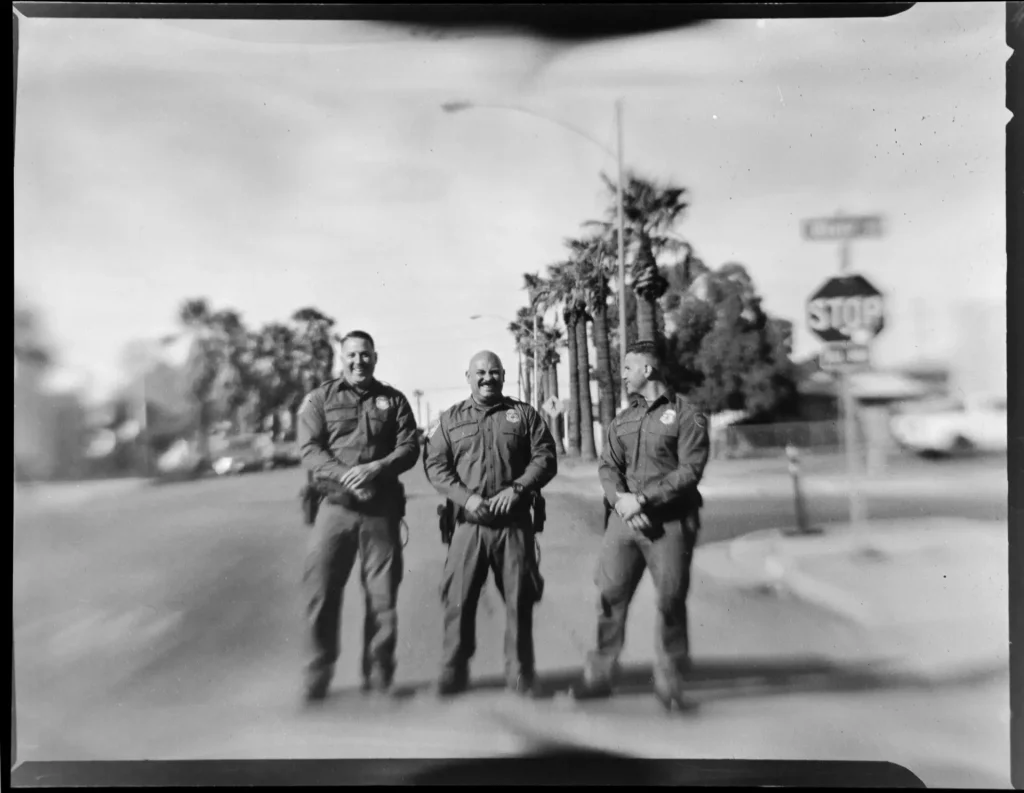
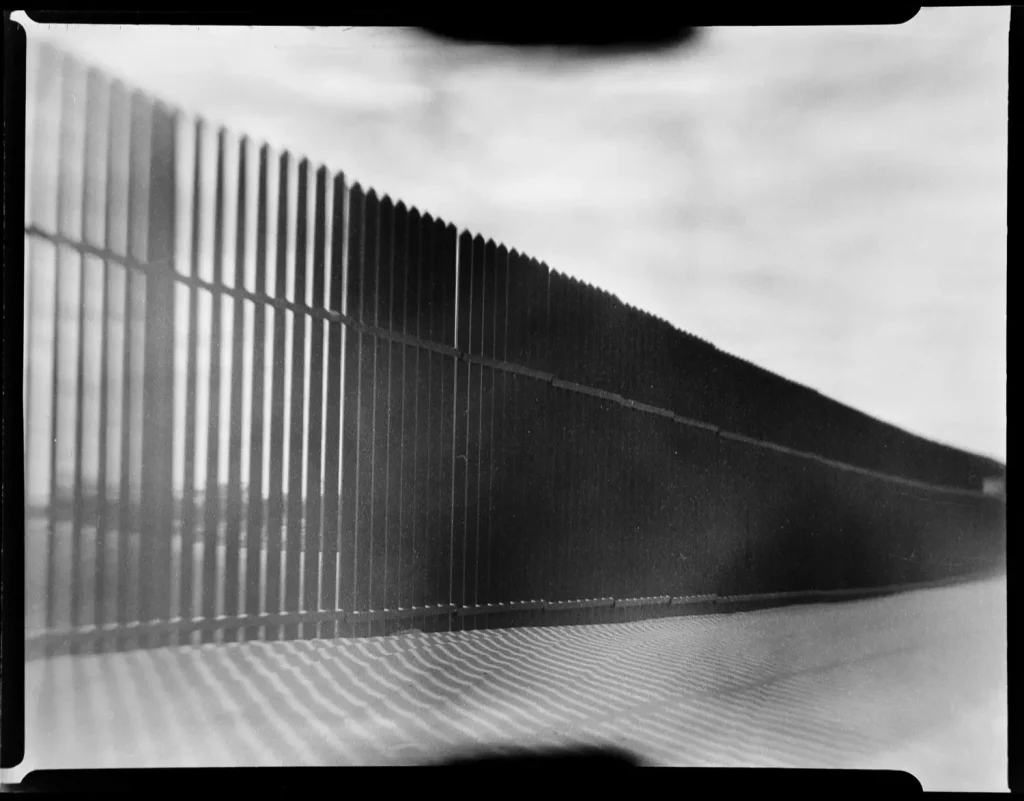
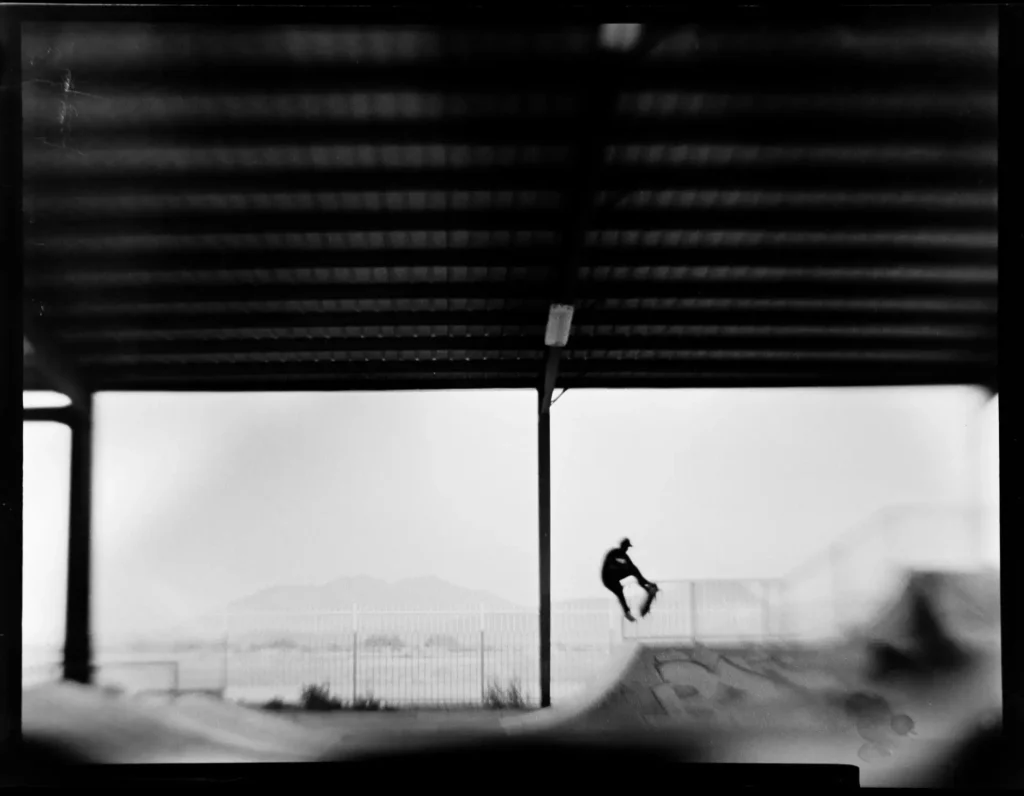
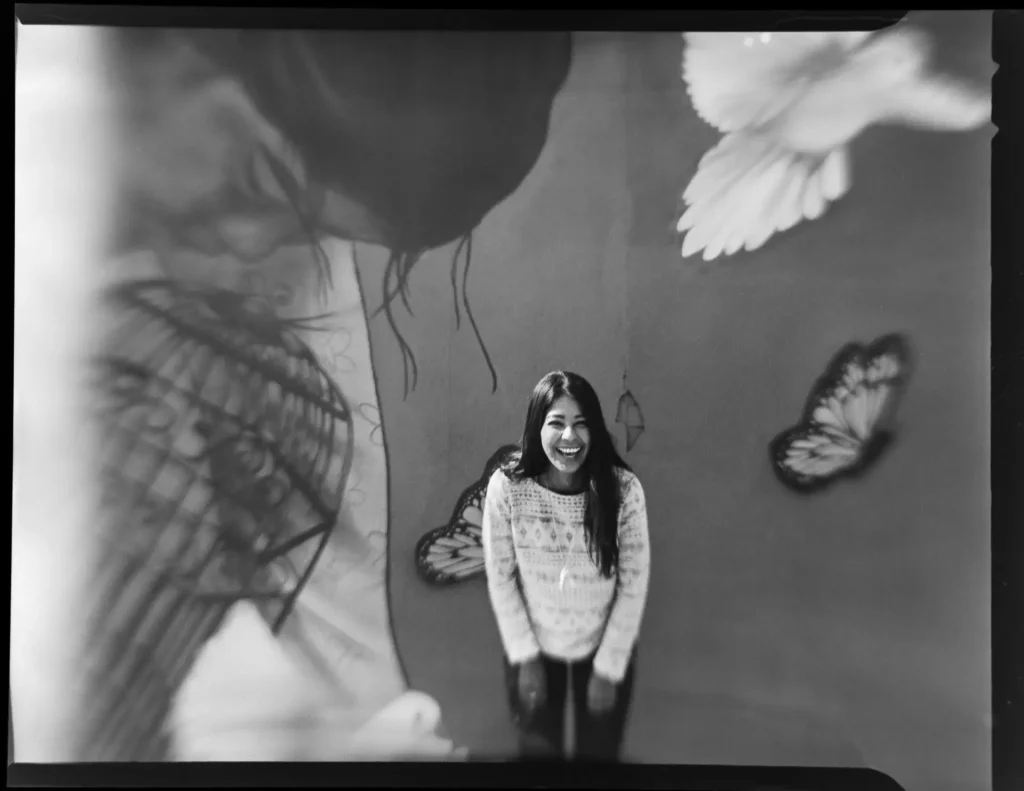
“Ride Slow, Take Photos” premiered in the 2020 San Francisco Independent Documentary Film Festival. It’s currently unavailable for public viewing but is being shown on January 2nd at 11:00am PST in the Large Format Photography Podcast group on Facebook.
If you want to watch it, come join us for the first Large Format Photograph Podcast group event of the year! I’ll be on hand afterwards to talk about the project and take any questions the viewers have.
Share this post:
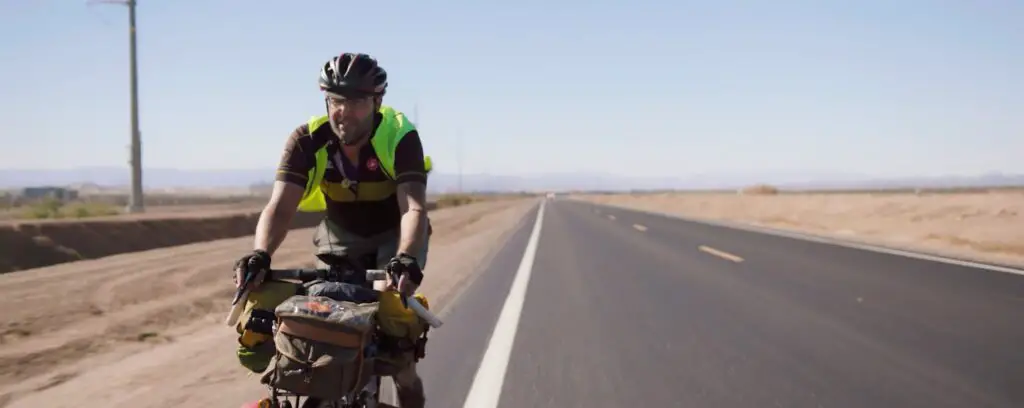








Comments
Simon Forster on “Ride Slow, Take Photos” – 1200 Miles on a bicycle with a Speed Graphic – By Erik Mathy
Comment posted: 02/01/2021
Steve on “Ride Slow, Take Photos” – 1200 Miles on a bicycle with a Speed Graphic – By Erik Mathy
Comment posted: 02/01/2021
Ralph Turner on “Ride Slow, Take Photos” – 1200 Miles on a bicycle with a Speed Graphic – By Erik Mathy
Comment posted: 02/01/2021
Mani on “Ride Slow, Take Photos” – 1200 Miles on a bicycle with a Speed Graphic – By Erik Mathy
Comment posted: 02/01/2021
Ironic.
Comment posted: 02/01/2021
Michael J on “Ride Slow, Take Photos” – 1200 Miles on a bicycle with a Speed Graphic – By Erik Mathy
Comment posted: 03/01/2021
Comment posted: 03/01/2021
Allysse Riordan on “Ride Slow, Take Photos” – 1200 Miles on a bicycle with a Speed Graphic – By Erik Mathy
Comment posted: 14/01/2021
Will the film be able to be viewed publicly at some point?
I completely missed the viewing on Facebook (I wasn't aware of it until now).
In the meantime, is there anywhere else I can read more about your trip? It sounds really fascinating. As an avid slow cyclist and lover of photography, your trip is making me rather curious.
Comment posted: 14/01/2021